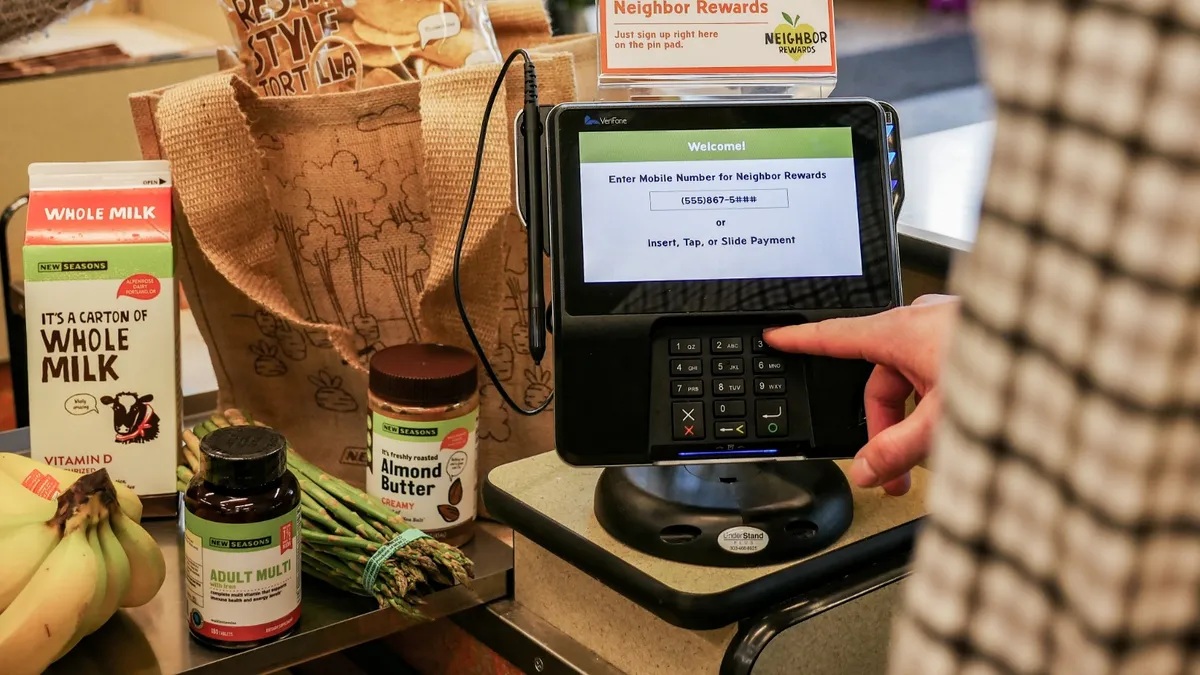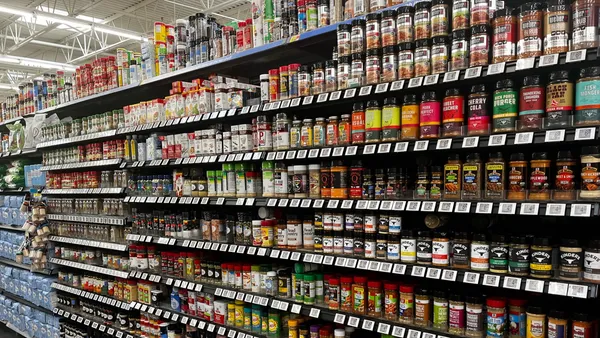Dive Brief:
-
West Coast grocer New Seasons Market has launched Neighbor Rewards, an all-digital, points-based program, according to a press release emailed to Grocery Dive. This is the grocer's first rewards program.
-
With Neighbor Rewards, customers can earn one point for every dollar they spend, with a $5 reward for every 500 points. Double points are available on the store’s New Seasons’ Partner Brand and MADE products, which support small, regional producers, and bonus points are awarded for customers using reusable bags and containers.
- Separately, Giant Eagle has expanded its fuelperks program under the name fuelperks+. Shoppers will still earn a 10-cent gas reward for every $50 spent on groceries, and now they can also earn rewards on purchases of gift cards, prescriptions and fuel. Rewards can be redeemed for gas or for 2% off groceries, up to 20% off a grocery order.
Dive Insight:
New Seasons' Neighbor Rewards program has been in development for a while as the company worked to create an offering with genuine significance to its customers, a spokesperson told Grocery Dive. The program is designed to be different with simple, tangible benefits intended to support the company’s mission and values, and reward customers for their support of small, regional producers and commitment to sustainability.
The privately owned grocery chain, which operates in Washington, Oregon and California, caters to an audience seeking healthy, organic and natural foods that support local producers, when possible. These shoppers are not going to go for the lowest price on any product; they are going to seek out food that meets their standards, and a traditional loyalty program may not resonate. New Seasons' efforts to incorporate customer feedback and take their time in the design should result in quick adoption from loyal customers.
Meanwhile, Giant Eagle is doubling down on fuel rewards, which continues to grow in popularity with shoppers. A spokesperson told the Pittsburgh Post-Gazette that Giant Eagle customers redeemed more than $230 million fuelperks rewards in 2018, and that fuelperks is a huge part of the company’s DNA.
Many other retailers, including Safeway, Winn-Dixie, Kroger, Hy-Vee and Stop & Shop offer fuel rewards. While grocery stores without fuel centers or fuel rewards can offer lower prices on groceries for shoppers, some retailers find that offering discounted fuel ultimately wins with customers. Edmonton IGA in Kentucky, for example, said that its shoppers appreciate the opportunity to get discounts on both groceries and gas as a result of its fuel rewards program, even if another store can beat them on price.
According to a report from Excentus Corporation released last year, 20% of consumers reported shopping specifically at stores where they can earn rewards to save on fuel, and 64% of Americans participate in a program that helps them save on gas costs. Given the ongoing cost of both gas and groceries, the pairing of fuel and food rewards is clearly driving customer loyalty for a number of grocers.
Across the retail and food industries, companies have been making updates to their rewards programs. Starbucks just unveiled changes to its loyalty program to offer more redemption options and appeal to a wider audience, after a tepid response to some of its latest drink innovations. Chipotle just launched its first official perks program with Chipotle Rewards, and last fall Target expanded how customers can use its Cartwheel app.
There are a few reasons for the rise in loyalty program changes. Retailers are facing more competition and are seeking better data collection, and shoppers are increasingly looking for personalized experiences and better prices. If retailers can design loyalty programs that appeal to shoppers and refresh rewards programs to offer something new, they may attract new customers and solidify their hold with existing ones.













